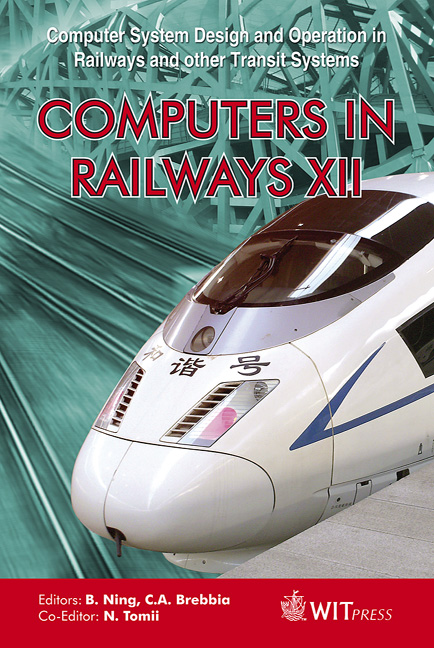Headway Generation With ROBERTO
Price
Free (open access)
Transaction
Volume
114
Pages
9
Page Range
431 - 439
Published
2010
Size
325 kb
Paper DOI
10.2495/CR100401
Copyright
WIT Press
Author(s)
A. D. Middelkoop
Abstract
A traditional and expensive solution for bottlenecks in a railway network is to build more infrastructure. To handle future growth of passenger and freight transport demand, the Dutch rail infra manager ProRail is looking for alternative ways to solve capacity and quality bottlenecks. One of the ideas is to evaluate and improve the timetable development process. By applying design principles and by other conditions, buffer times are used in different timetable construction phases. It is not clear whether and where the use of buffer times may cause a double claim on capacity. An important design principle is the use of headway times to separate two trains in the timetable safely. The specific values for headway situations are mostly unknown. Planners use general values, based on their experience. The current timetable planning tools require headway times as input data. Given the large number of potential train combinations, it is almost impossible to know every headway time before timetable construction starts. To improve the knowledge and application of headway times, ProRail started the development of ROBERTO, a tool for generating a large number of headway times. The aim is to compute headway times for specific situations and to determine general headway times for use on a more global level. The input for ROBERTO is generated by simulating train characteristics, block section occupation times and signalling aspects. ROBERTO combines possible conflicting train pairs and calculates the headway times. All results are fed into the planning systems and the effect on capacity and quality will be evaluated. Keywords: timetable design, headways, simulation. 1 Introduction This paper describes the development of a new planning support tool ROBERTO, for generating a large number of headway times. After a short introduction of the Dutch Rail Network and its challenge for the near future in
Keywords
timetable design, headways, simulation





